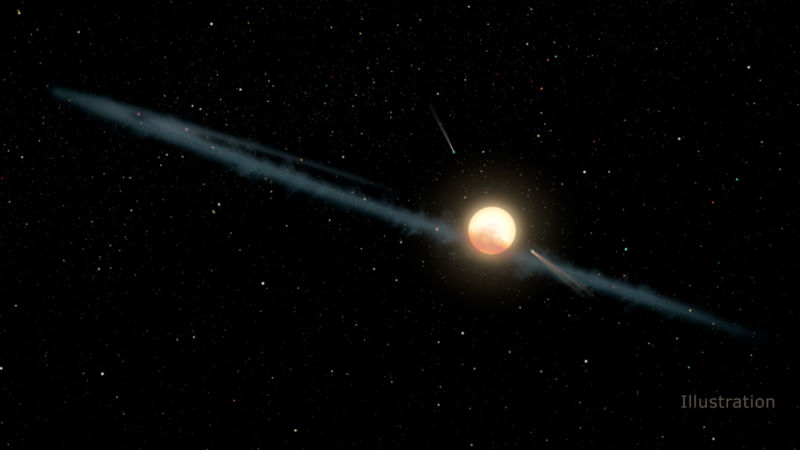Dimming of Tabby’s star likely caused by something less sexy than aliens
Ars Technica 2017-10-04

Enlarge / This illustration depicts a hypothetical uneven ring of dust orbiting KIC 8462852, also known as Boyajian's Star or Tabby's Star. (credit: NASA/JPL-Caltech)
In recent years, a distant star in the constellation Cygnus, known officially as KIC 8462852 and unofficially as Tabby's star, has intrigued astronomers due to its irregular but significant dimming. As the star has faded by as much as 20 percent and then returned to its normal brightness, scientists were forced to admit that they didn't have a good explanation for this behavior.
The theories they put forth to explain the dimming included some pretty exotic notions, such as some kind of super-large alien megastructure that passed in front of the star. Alas, astronomers using NASA's Swift and Spitzer space-based observatories have come up with a much more prosaic explanation for the phenomenon—dust.
A new study in The Astrophysical Journal analyzed light data gathered across a broad swath of wavelengths collected between October, 2015 and December, 2016. The researchers found that the dimming effect was less pronounced in the infrared wavelengths of light than the ultraviolet light. This finding is consistent with the idea that dust particles would scatter more of the shorter wavelengths of ultraviolet light, while more of the longer wavelength infrared light would make it through a dust cloud.